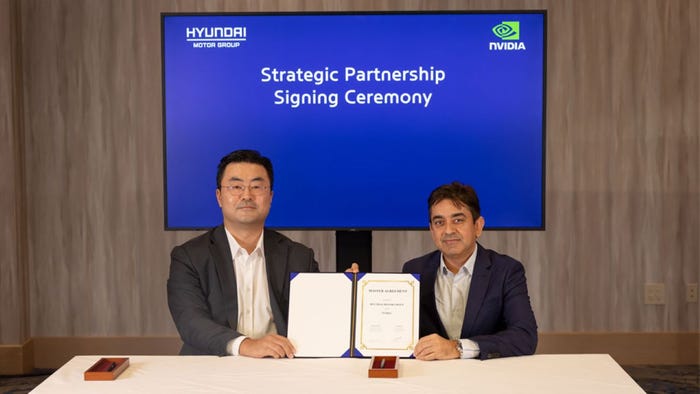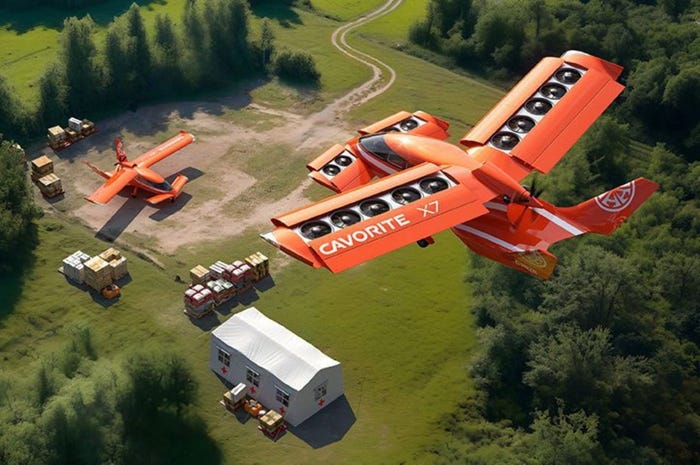How IoT Can Change the Entire Product Lifecycle: Interview
Machine Design speaks with Bryan Kester, Director of IoT at Autodesk, about how to help engineers design applications for smart products.
August 1, 2016

By Carlos Gonzalez
Please tell me a little about yourself and your background.
I was the CEO of SeeControl, which was acquired by Autodesk in October of 2015. SeeControl was established in 2010 and was a one-stop shop in the cloud for building Internet of Things (IoT) applications. It did data collection and analytics (real time or historical), but more importantly was that people could build IoT applications without being a software developer. It was geared toward business analysts and engineers, whether they were mechanical, civil, or electrical—groups that are not experts in three-tier web applications that millions of devices need to use and interface with.
Prior to that, I was a venture capitalist and operating executive focusing in on startups around the Silicon Valley area. The common thread is that I have always had this fascination with IoT going back to the early RFID days in the early 2000s. I worked with a company that did healthcare RFID, which was acquired by Cardinal Health. I have always been fascinated with being able to control things over the Internet, which led to me teaming up with our CTO to create the platform we have today.
We agreed to be acquired by Autodesk because they have a fantastic vision toward the cloud. This vision addresses the current movement of people designing electronics and sensors in to everything because it has become cost-effective. This technology is not necessarily new, but it is now cheaper and achievable.
How does SeeControl fit into the Autodesk platform?
There are two different things happening. SeeControl is now called Fusion Connect. It is part of our already successful design product Fusion 360, which is one of two cloud-based CAD/CAM systems in the market. I am part of a large team that does product lifecycle management (PLM), which handles product-management automation after the CAD/CAM piece.
PLM and IoT are inextricably linked in that the lifecycle of a product does not stop when it is sold; it goes out into the field and sends data back. The idea is that if you instrument from within your Fusion 360 CAD tool the sensors, the microcontrollers, the circuit boards, and computers that go into the product all the way to our Fusion Connect IoT tool—which allows you to build customer-facing applications for our smart products—you have a lifecycle where IoT is touching every aspect.
The entire product lifecycle is changed when IoT is considered at the design phase. The user is designing based on the performance history of the sensors and circuits boards, including things such as how much power they may draw, and the form factor to be used. Then the user launches the prototype into the world and receives feedback from the sensors. They indicate what improvements can be achieved or which components should be changed due to the product’s performance. This will inform the PLM to obtain components from different suppliers, which will increase performance. Once the user is ready to sell the product, you can then offer advanced services from your product, such as preventive or predictive maintenance.
Ultimately, what a lot of our customers are starting to do is turning their product into an actual service. For example, a company that makes hydraulic pumps will also sell you a long-term subscription on operating or output data; i.e., the amount of fluid that it pumps. So part of the impact of IoT from the design phase to lifelong field service, which can span decades, is transforming the whole cycle of design, make, and use. It also transforms the relationship between manufacturer and customers, where manufacturers start becoming service companies for their products.
If the manufacturer is providing analytic service, where is the data stored and who controls the data?
If you enter a factory setting, certain shop-floor systems have been in place for decades. They collect data that is sitting on a server in the facility. It is not stored online or on the internet; it is not centrally viewable; and operation management personnel typically only look at the data or mine it after something has gone wrong. Anything above and beyond normal preventive maintenance is not widely viewable or consumable by most of the organization.
The efficiency of the plant is usually provided by the plant manager, and it is typically just a number or a top-level overview in a PowerPoint file or Excel report shared with the corporate organization. Many organizations simply do not have the ability to view the data across their operations. This creates an opportunity for manufacturers to come in “over the top” to with pre-connected products with either cellular connectivity or an external connection to collect data for IoT purposes. For business managers of these plants, this provides a service in which they do not have to approach IT or invest extra time and money.
I have been doing software as a service (SaaS) for 20 years, and operations professionals are always reluctant to approach IT for solutions, so buying an “IT” based service from their trusted industrial equipment vendor is easy. That being said, I have been talking to more IT people than ever before in my career, and they are educating and urging their higher management to start working on IoT solutions.
What is the range of people involved in IoT projects today?
It is still a mixed bag. I worked in the “dot.com” era, trying to convince people the internet was important and would end up changing the work environment, and I am seeing the same phenomenon today—people are struggling with what is IoT, what it means for them, and how do they do this.
In terms of people or personnel, there is an increase in product managers as well as some increases in marketing and sales. But more importantly, we are seeing the creation of new job titles. For example, new positions being created include titles like Director of IoT Platforms, Vice President of Connectivity, or Vice President of Remote Monitoring. You see these titles emerging at forward-thinking companies that know they cannot fill those roles with an incumbent because it crosses several different business units. They are hiring people that can cross into all of these different work areas.
What products and services does Autodesk offer in their IoT solution?
Autodesk is just part of the IoT solution—the central cloud analytics and web application piece. Companies claiming “end-to-end” solutions are being dishonest. One of my customers in a recent interview stated that in his 35 years as a product manager, he never had been involved in a more complicated project than IoT. He originally had 21 different suppliers and not a single person or company can own the whole project; it is just too complicated. With us, he is down to one vendor for the cloud piece and a handful of others for devices and connectivity.
By default you have to work with partners. For example, Verizon is a big partner of Autodesk and is helping customers with industrial remote monitoring. We sell through wireless carriers, data-connection-device companies or embedded systems companies, and—most importantly—system integrators (SIs).
IoT projects need a well-educated SI to configure and deploy solutions on these platforms for you. These SIs typically come from small boutique companies that know how to pull together virtually all of the components into a cohesive solution. The components are an embedded system, device software similar to a smartphone app, a connectivity layer for the network, and large software in the backend and visualization layer, such as Fusion Connect, to provide the cloud service.
Do you feel that Autodesk is approached first in the planning or later on by other companies?
Today, we mainly are receiving business through the partner ecosystem we brought in to Autodesk. That will change as we increase the awareness level of Fusion Connect among Autodesk customers—we have tens of thousands of customers in our manufacturing vertical alone. We are planning for the market approach to change, where many of our users will approach us directly for IoT services and procure the service online to try it out and see if IoT is a fit for their company. We try to classify our customers into two groups: those who are just learning about IoT and the cloud, and those fully transforming companies embracing IoT systems. The advantage of our platform is that if you have an idea, you can execute it with minimal effort, and a product manager can show it to your customers for instant feedback and quick market launch.
This article was originally published on our sister site Machine Design.
You May Also Like






